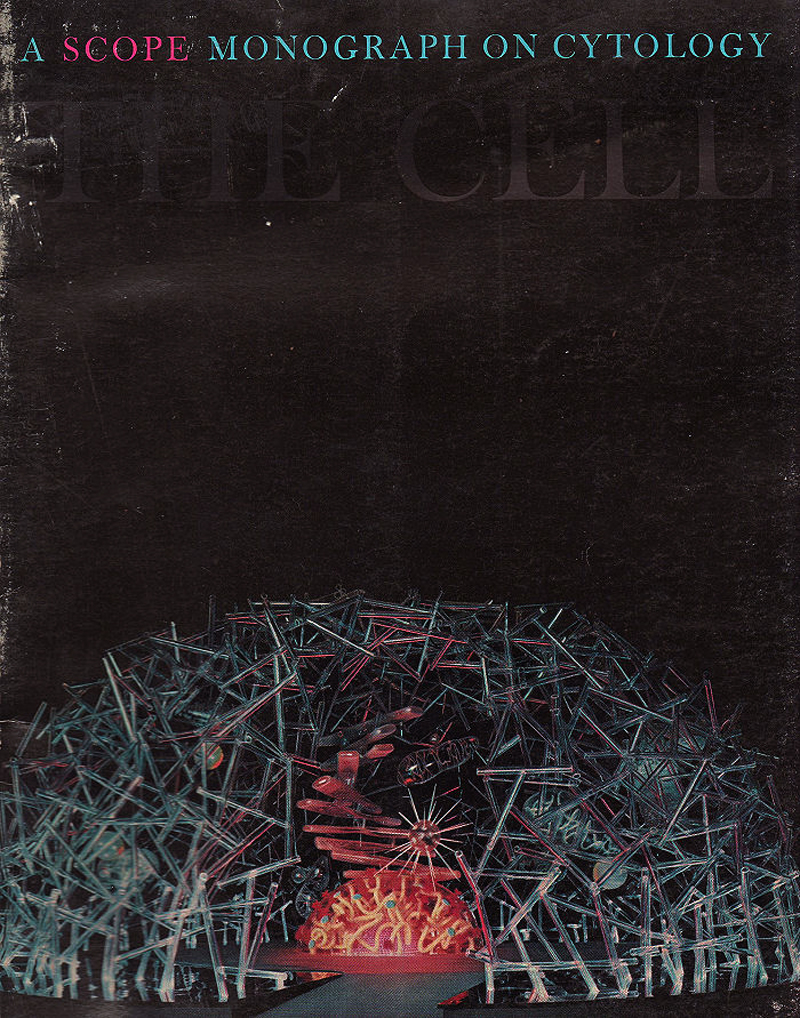
Front cover. The Cell monograph, designed by Burtin, 1960. From the Lou Danziger Archives.
There was a time when those people who combined words, images, shape, and color to communicate a message were called “graphic designers.” “How odd,” we comment now when there are so many other options: service designer, experience designer, information designer, strategic analyst, and interactive spatial strategist. However, I find it best to ignore most of these naming exercises, and get to work.
Fifty years before the age of the interactive spatial strategist, Will Burtin (1908–1972) designed a series of large-scale experiences to articulate complex information to the public. The Cell (1958), The Brain (1960), and Genes in Action (1966) articulated the idea and impenetrable information in an easy to understand, visceral, and intuitive form. Burtin was the art director for Upjohn Company’s Scope magazine and a pioneer in modern information design. He achieved a level of lucidity with sophisticated and opaque medical content metaphor, symbolism, and direct diagrams. This was possible only with Burtin’s deep research and involvement with scientists and researchers.
Faced with the assignment of instructing the general public about the structure of a cell, Burtin realized that a two-dimensional medium was not sufficient. Here is the fork in the road: many designers would stop here and design a diagram or chart on the page or on a wall. The information in two-dimensional form would need to be adequate. Burtin, however, ignored the roadblock and steered toward the next medium. The Cell was a three-dimensional presentation that the viewer could enter. Within the structure of a cell, an individual with minimal medical knowledge would decode how a cell was structured, what it did, and how it worked.
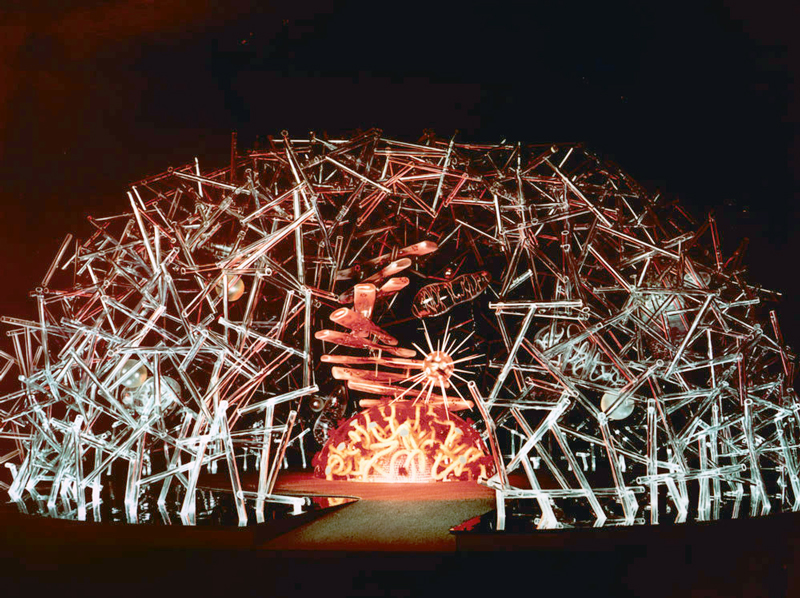
The Cell (1958). Photograph by Ezra Stoller © Esto. From Design and Science: The Life and Work of Will Burtin New edition Edition by R. Roger Remington (Author),Robert S. P. Fripp (Author)
Burtin followed up with the success of The Cell with The Brain (1960) and Genes in Action (1966). Each of these was exhibited at medical conventions and museums. The Brain was a maze of light bulbs, aluminum discs, and tubes. It responded to the sound of a singer. Lights ran through the tubes to represent synaptic pathways. The responses changed with the sound of a different singer and audience applause. While this may seem humorously naïve to us, it worked. The visceral experience of the viewer transcended simple information graphics. What is an incomprehensible jumble of complex electrical, quantum, and biological systems became clear.
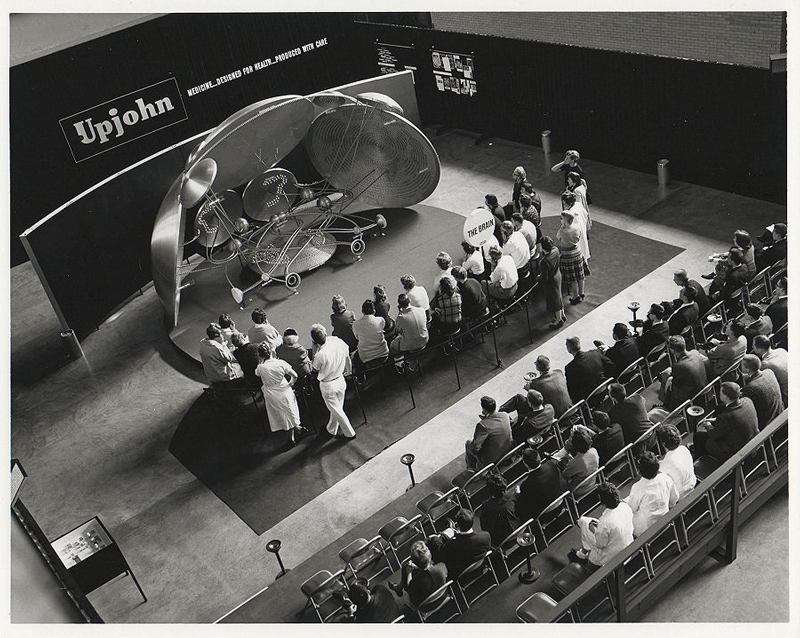
p { margin-bottom: 0.1in; direction: ltr; line-height: 120%; text-align: left; }a:link { color: rgb(0, 0, 255); }
Spectators listening to narration of The Brain exhibit, American Medical Association meeting, Miami. Will Burtin,1960. From RIT Library.
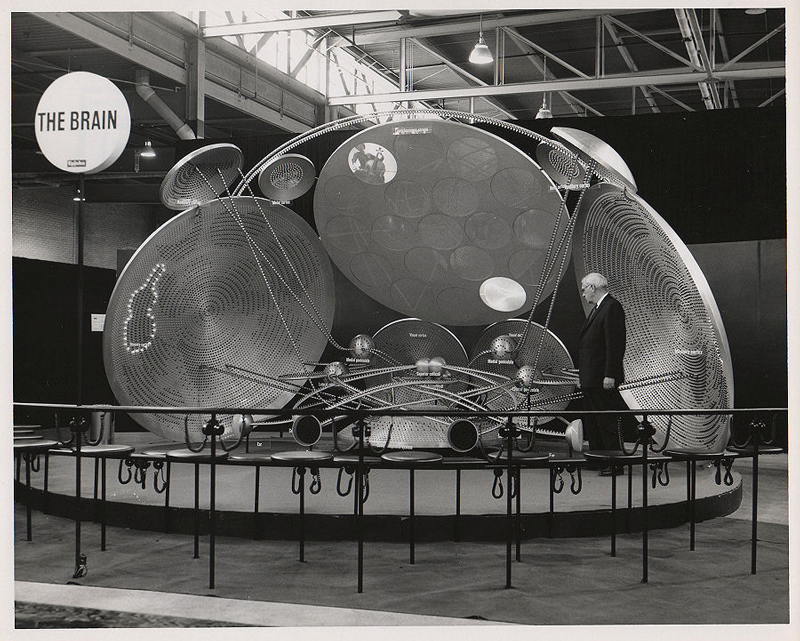
The Brain exhibition, American Medical Association meeting, Miami. Will Burtin, 1960. From RIT Library.
Today, we call this experience design or transmedia. It is the role of the designer at its finest. Granted the structure of Genes in Action now seems rather Matrix-esque, but Burtin’s relentless focus on making information clear resulted in the jump from two-dimensional thinking to four-dimensional concepts: three-dimensional space and time. He was not interested in defining a new practice with specific nomenclature. Burtin was a graphic designer with no sense or boundaries in media. He was not concerned that his job was purely a print designer. He understood the assignment was to make the complex clear and to use any and all tools needed.
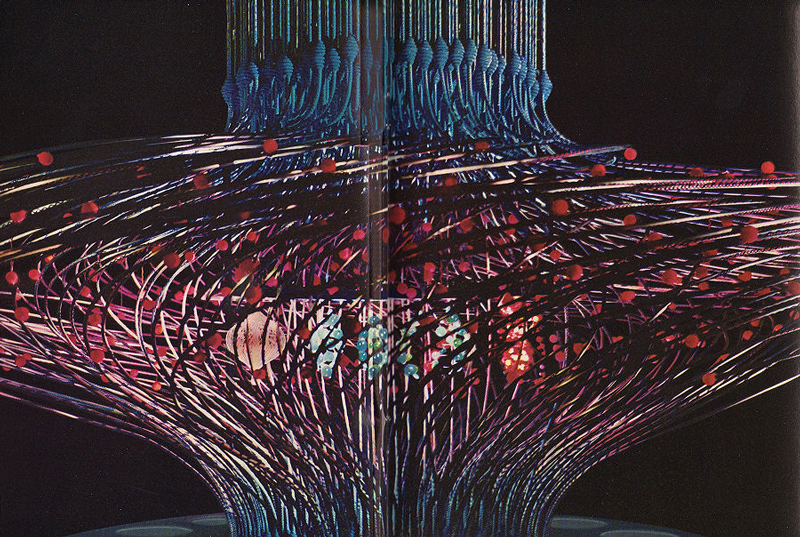
Chromosome: Genes in Action exhibit, designed by Burtin, 1960. Photograph by Ezra Stoller © Esto. From the Lou Danziger Archives.
